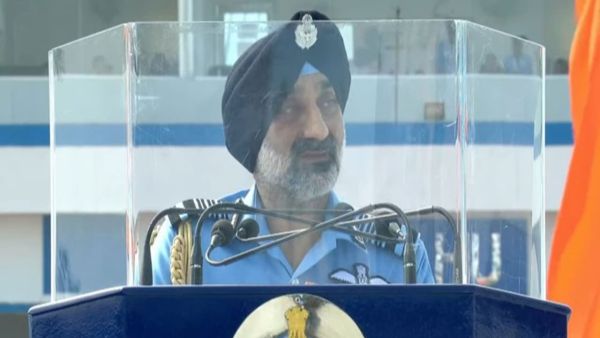
IAF chief ACM AP Singh termed Operation Sindoor as a shining example of meticulous planning, disciplined training and determined execution which helped in devastating blows deep inside Pakistan’s territory during May 7-10 border hostilities.
Highlighting the achievements of four-day military conflict between India and Pakistan, the Indian Air Force chief ACM AP Singh on Wednesday, on the occasion of 93rd Air Force Day celebrations, termed Operation Sindoor as a shining example of meticulous planning, disciplined training and determined execution which helped in devastating blows deep inside Pakistan’s territory during May 7-10 border hostilities.

Addressing the air warriors at the Hindon air base in Uttar Pradesh’s Ghaziabad, ACM AP Singh said, “Operation Sindoor is a shining example of what can be achieved through meticulous planning, disciplined training and determined execution.”
Talking about India’s bold and decisive actions, the IAF chief said, “Our performance in Operation Sindoor fills us with professional pride. It proves to the world how air power can be effectively used in shaping military outcomes in just a few days. India's bold and precise attacks restored the rightful place of offensive air action in the national consciousness.”
What IAF Chief said on Akash and BrahMos missiles
On usages of home-grown weapon systems, including Akash and BrahMos missiles, he said, “The outstanding performance of the indigenously developed and integrated weapons which delivered precise and devastating blows deep inside enemy territory, vindicates our faith in home-grown capabilities.”
A day ago, the IAF chief, while addressing the Nation, said, “We made precise strikes in Pakistan under Operation Sindoor forcing them to come for negotiations for ceasefire.”
In order to avenge the killing of 26 innocent tourists at Pahalgam in Jammu and Kashmir on April 22, India launched night time strikes targeting nine terror camps across Pakistan and Pakistan-occupied-Kashmir on May 7, underlining its intent to hit only terror hubs without crossing the International Boundary or LoC.
The operation was concluded in just 23 minutes as the IAF could able to bypass and jam the Pakistani Chinese supplied air defence systems on this day.
In response, Pakistan attempted to attack military installations spread across Gujarat to Punjab through drones and vectors.
On May 9 – 10, the IAF deployed a number of dummy and unmanned aircraft which were masquerading as fighter jets, prompting Pakistan to activate its radars and missile systems, including Chinese HQ 9 system. It helped the Indian Air Force in carrying out the follow-up strikes as the surveillance picked the exact locations.
During the course of actions on the night of May 9 – 10, the IAF used BrahMos supersonic cruise missiles, Scalp, and other precision munitions to strike a number of Pakistan’s air bases, radars, command and control centres, runways, and hangars. It destroyed 5 American-made F-16 fighter jets on ground, as stated by the Indian Air Force chief in his annual press briefing days ago.
The IAF had asserted that Pakistan lost a total of 12 aircraft, including F 16s, JF 17s, and one surveillance/AEW&C aircraft.
-
Hyderabad to Kashmir: Your 2025 guide to valley’s first snowfall

-
Karur stampede: Vijay’s TVK moves SC challenging HC order to set up SIT

-
Poll code applicable to Central govt too for policy decisions on Bihar: EC

-
‘2 faiths, 1 script’: Bigg Boss fame Sara Khan marries BF Krish Pathak

-
Gold and Silver prices continue to rally: Why are the prices rising
